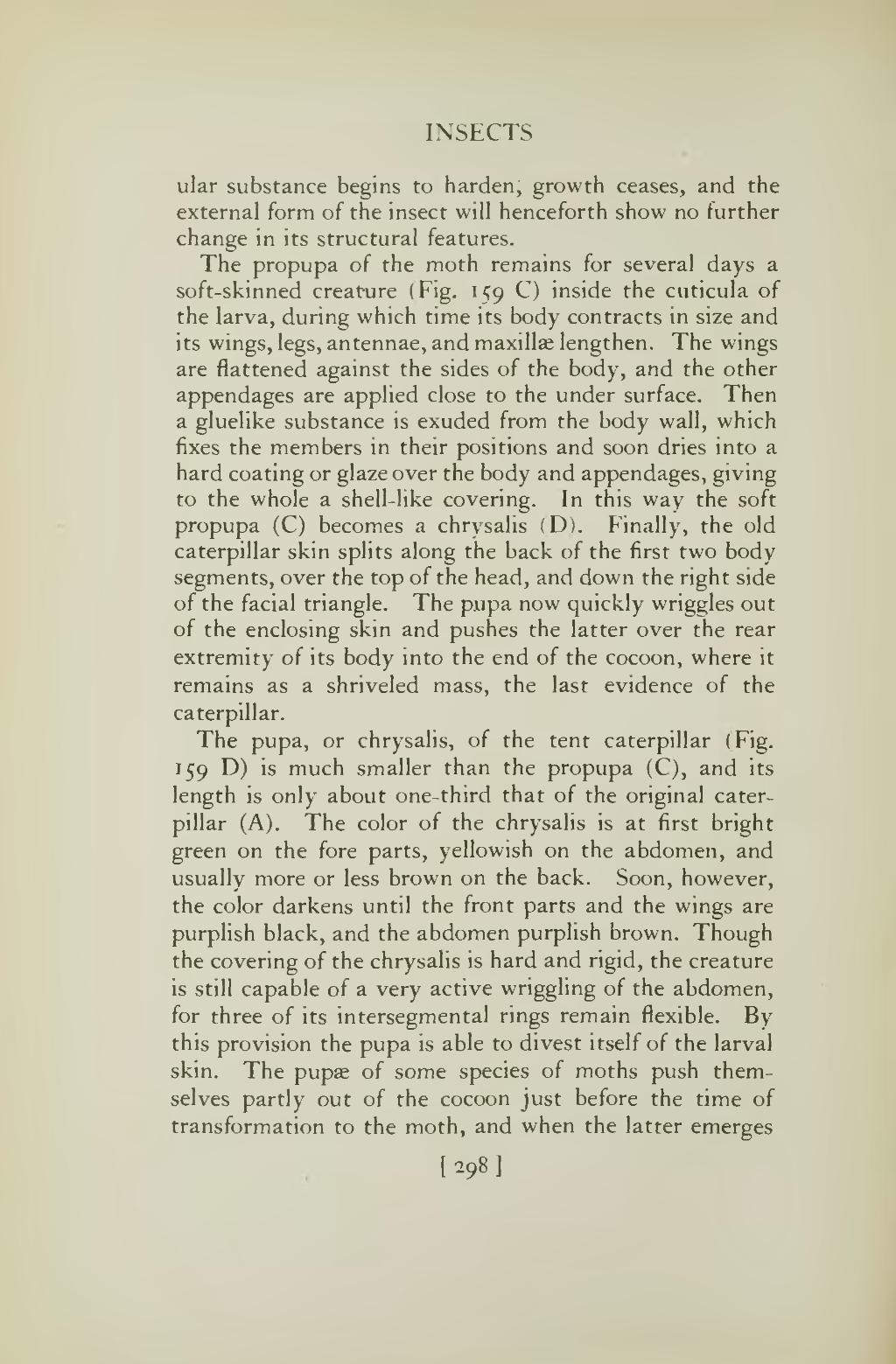ular substance begins to harden; growth ceases, and the external form of the insect will henceforth show no further change in its structural features. The propupa of the nnoth rennains for several days a soft-skinned creat'ure I Fig. ?59 C) inside the cuticula of the larva, during which tinne its body contracts in size and its wings, legs, antennae, and nnaxilloe lengthen. The wings are flattened against the sides of the body, and the other appendages are applied close to the under surface. Then a gluelike substance is exuded fronn the body wall, which fixes the nnennbers in their positions and soon dries into a hard coating or glaze over the body and appendages, giving to the whole a shell-like covering. In this way the sort propupa (C beconnes a chrvsalis (D). Finally, the old caterpillar skin splits along the back of the first two body segnnents, over the top of the head, and down the right side of the facial triangle. The p.upa now quickly wriggles out of the enclosing skin and pushes the latter over the rear extrennity of its body into the end of the cocoon, where it rennains as a shriveled mass, the last evidence of the caterpillar. The pupa, or chrysalis, of the tent caterpillar I Fig. ?59 D) is nnuch snnaller than the propupa (C), and its length is only about one-third that of the original cater- pillar (A). The color of the chrysalis is at first bright green on the fore parts, yellowish on the abdonnen, and usually nnore or less brown on the back. Soon, however, the color darkens until the front parts and the wings are purplish black, and the abdonnen purplish brown. Though the covering of the chrysalis is hard and rigid, the creature is still capable of a very active wriggling of the abdonnen, for three of its intersegnnental rings rennain flexible. By this provision the pupa is able to divest itself of the larval skin. The pupoe of sonne species of nnoths push thenn- selves partly out of the cocoon just before the tinne of transfornnation to the nnoth, and when the latter ennerges
[ ?9 8 ]
THE
